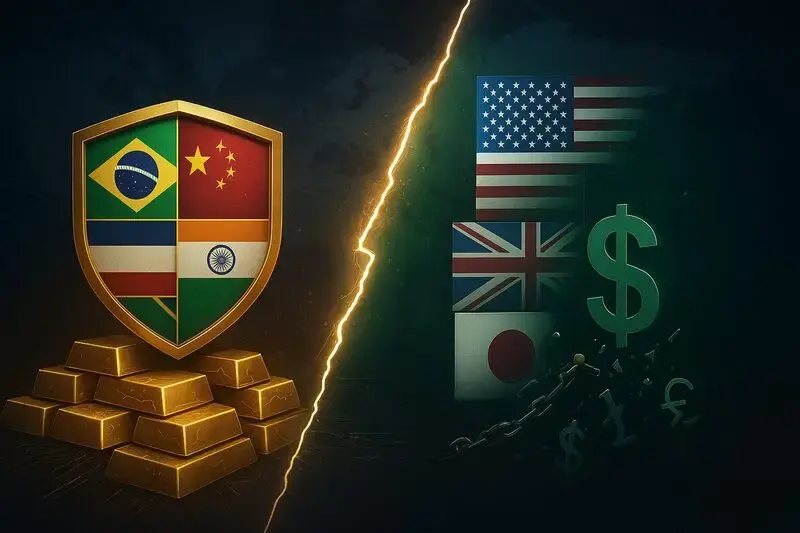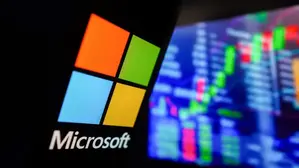Countries against BRICS currency are forming an unprecedented coalition right now, and more than a dozen major nations including the United States, United Kingdom, Japan, and Germany have aligned to stop BRICS currency initiatives. President Trump escalated tensions this week by calling BRICS de-dollarization efforts an “attack on the dollar,” and the resistance is intensifying even as the BRICS currency union accelerates toward a 2026 launch. The latest BRICS currency news reveals Western powers determined to protect dollar dominance while BRICS nations build a BRICS gold-backed currency alternative that could reshape global finance, and the stakes are enormous for both sides.
Also Read: BRICS Currency Backed by Gold and XRP Shows Impressive Progress
Countries Against BRICS Currency Trigger Global Financial Shift

Western Powers Unite to Stop BRICS Currency
The coalition of countries against BRICS currency includes at least 12 major economies right now, and each nation has specific reasons for opposing the BRICS currency union. The United States views the initiative as a direct threat to the dollar’s global reserve status, which underpins American economic power and allows cheap deficit financing while maintaining geopolitical leverage through sanctions.
The United Kingdom has been expressing concerns about threats to the dollar-based system that London’s financial sector depends on heavily. Japan worries that a BRICS gold-backed currency could destabilize global trade patterns and reduce the yen’s regional importance, while Germany remains skeptical despite having the euro. France generally opposes BRICS currency union initiatives that could undermine the euro and European financial influence, and Canada is concerned that such an alternative could fragment the global financial system in ways that harm Western economies.
Australia views BRICS currency ambitions as potentially destabilizing to the rules-based international system, and South Korea remains wary of any payment mechanism that could complicate its economic relationships or reduce American engagement in Asia. Singapore has expressed concerns about fragmentation since its financial hub status depends on the current dollar-dominated system at the time of writing, while Switzerland opposes radical restructuring of global arrangements. Saudi Arabia has been cautious about abandoning the petrodollar system despite being courted by BRICS, and the resistance from countries against BRICS currency reflects deep economic interests.
Trump Escalates Campaign Against BRICS Currency Union
President Trump intensified his campaign to stop BRICS currency plans during a lunch with Argentine President Javier Milei this week, and speaking to reporters on Tuesday, the President suggested that his tariff threats had already caused member nations to back away from the de-dollarization agenda. Trump asserted that the dollar’s continued dominance would not have been secured without his 2024 election victory, and his rhetoric has been escalating against countries supporting the alternative system.
BRICS Gold-Backed Currency Development Accelerates
The latest BRICS currency news shows momentum building despite Western efforts to stop BRICS currency development, and analysts from UltimaMarkets revealed encouraging progress toward a potential 2026 launch. The 17th BRICS Summit in Brazil during July 2025 delivered significant progress for the BRICS gold-backed currency development, and leaders successfully reaffirmed their monetary cooperation commitments while making substantial strides in expanding local trade settlements.
The BRICS-10 expansion has strengthened the BRICS currency union’s economic influence considerably, and the group now represents 46% of global population and also 37% of world GDP. BRICS nations are building sophisticated payment systems right now, and member nations have expanded local settlements remarkably. Russia and China are thriving in bilateral trade using national currencies, while India is pushing rupee settlements with Global South partners.
The digital framework for the BRICS gold-backed currency effectively utilizes blockchain technology for cross-border payments and bypasses traditional SWIFT systems, and member nations are advancing CBDC integration research productively across the bloc. Pilot programs will begin testing milestones by 2026, and BRICS nations are building the infrastructure to leverage substantial reserves and create alternatives to traditional systems. At the time of writing, BRICS hasn’t finalized the currency name yet, though the BRICS currency news suggests a potential 2026 timeline based on current progress.
Also Read: BRICS Pays 43% of Peanuts Exports in the Chinese Yuan
Why Countries Against BRICS Currency Are Fighting Back
Countries oppose BRICS currency because they fear losing economic privilege from dollar hegemony and worry about triggering global financial instability. These countries enjoy access to low-cost financing, transaction dominance, and the capability to affect world markets with monetary policy. Security alliances connect with economic arrangements, and if the dollar loses its superior status, these nations would lose geopolitical power through sanctions. Skeptics question whether disparate BRICS economies could actually maintain a stable common system, and Western financial sectors depend heavily on the status quo.
The fact that countries formed a coalition to denounce BRICS currency marks the extent to which the economic clout is in the current dollar-centric regime, and the result of the clash might dictate how the international financial system looks in the decades to come. The progress is still depicting a gradual approach up to 2026-2027, and good signs are being realized as the digital frameworks keep gaining ground by growing into the local settlements and consolidated payment systems that may one day take the financial hegemony of the West to the task.






